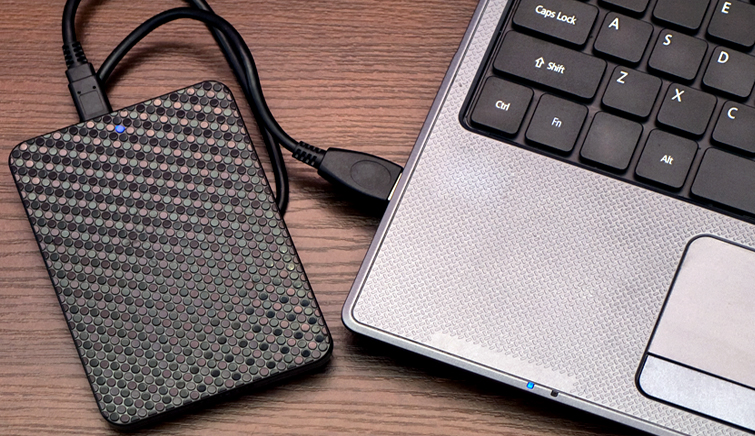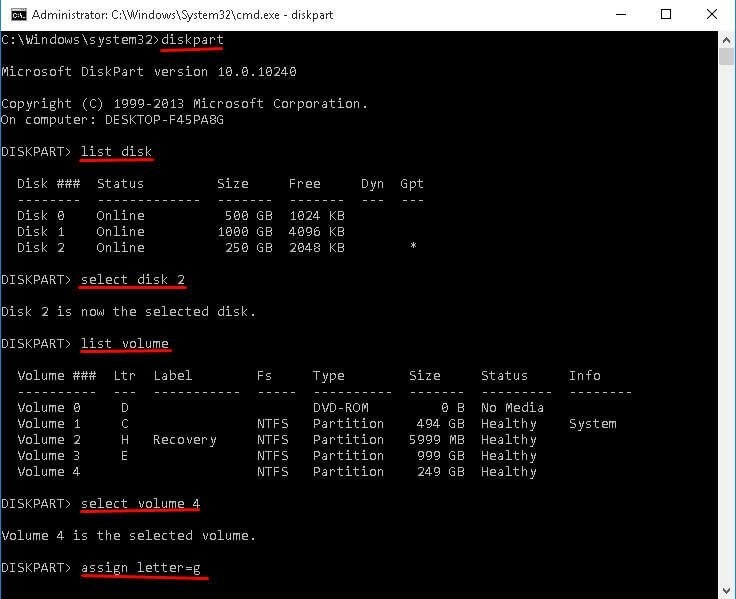

- How to partition external drive how to#
- How to partition external drive windows 10#
- How to partition external drive portable#
A bootable USB thumb drive with the Ubuntu 19.10 installation media.
How to partition external drive portable#
Note that we’re going to create a UEFI bootable portable drive, and so any computer you plug this drive into must be relatively modern with support for UEFI as well as have pretty good hardware support from Ubuntu / Linux. Here are the steps I went through in order to create a truly portable external SSD drive with Ubuntu 19.10 installed. And as with any OS / disk / partition-level activity, make sure you have backups of everything before you start. If you’re concerned about this, read ahead and review the fixes before proceeding.
How to partition external drive windows 10#
Like Nicholas, the machine I’m using to do all of this is a Windows 10 computer, and so if this is the same for you, then section F below will almost certainly apply and your computer will be left with a ‘dual boot’ configuration and Grub menu prompt at boot. Most of what follows is roughly aligned with Nicholas’s post.
How to partition external drive how to#
I did a bunch of reading and found the main Grub docs that describe how to repair/reinstall grub, but more importantly, I found Nicholas Dionysopoulos's post here - which was brilliant and paved the way. Not only is the external drive dependent on the boot information present in the host computer system partitions, but in most cases the computer won't boot if the external drive is removed. The problem with this process is that the new operating system - whether on an external drive or other, is now ‘bound’ to the computer’s main system partition and boot information. If a UEFI ESP partition already exists, the installing OS will typically give you a choice to overwrite, or modify boot loaders in the ESP with the option of creating a ‘dual boot’ installation.

There’s only fly in the ointment, and that is that during most ‘normal’ operating system (OS) installations - the OS being installed expects to either create, or find just one master boot record (MBR) or just one Unified Extensible Firmware Interface (UEFI) system partition (ESP). So clearly in terms of storage and bandwidth, there’s nothing here that would interfere with comfortable boot times and data transfer rates for any modern OS. Regular SATA-based external SSDs will deliver transfer rates of around 500MB/s, while new M.2 NVMe to SATA bridge enclosures will top out at around 1GB/s (that’s one gigabyte per second, not gigabits). With USB 3.0 to 3.1 Gen 2 supporting transfer speeds that now range from 5Gbits/s to 10Gbits/s - things are a bit different. At the time, USB 2.0, Firewire or even e-SATA meant that this wasn’t really practical. At first I thought I’d simply use the spare drive for backups or ad hoc storage, but then I recalled that ages ago I’d explored the idea of being able to simply plug the operating system of my choice into the USB port of a computer or laptop, and boot whatever flavor of OS I cared to. I recently upgraded the SSD in my main desktop computer and found myself with a spare 512GB M.2 NVMe SSD. Original Post: So this turned out to be fun, and productive - on several levels. Update: 07-02-2021 - C.S.Cameron posted this to - Although I've not tested this yet - it's a great post and appears to support both UEFI and older BIOS/MBR configurations. (Note that I'm not in anyway affiliated with TDBT, nor do I have an affiliate link with Amazon.) The cables that came with the TDBT enclosure work fine. The only caveat so far is that a Belkin USB-C cable I have here refused to recognize the TDBT device.

The enclosure, installation instructions, parts, are all top quality and the heat sink works. I've since switched to the TDBT M.2 NVMe SSD Enclosure (using the JMicron JMS583 controller), which is working great. I was having difficulty removing all partitions from the drive under Ubuntu using GParted - with GParted freezing on device re-scan. I was using a the 'Plugable Tool-Free NVMe' enclosure, but started to have difficulties with the Realtek RTL9210 controller and/or their USB cables. Update: 17-08-2020 - a few people have asked which NVMe external enclosure I'm using in the photo above.


 0 kommentar(er)
0 kommentar(er)
